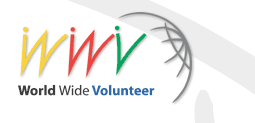Report (Part 4): Third World Summit on the Internet and Multimedia10 October 2002 © ICVolunteers and the Swissmedia, Montreux, Switzerland Contents
Special Workshop on e-learning: Multimedia Tools and Software in e-learningTime: 10 October 2002, 15:00-17:00 Location: A 450 Chair: Eduardo Da Costa (CEO, NestBoston, Brazil) Presenters/ Participants: Shaun Lake (Managing Director, Global Trade Training, South Africa) The digital divide is largely due to a gap in education and technology training and that e-learning is a tool designed to bridge the gap. A number of interesting panelists discussed through the experiences of their companies and organisations the many different aspects of e-learning, such as its mission, funding, technology problems and future expectations. The outcome of the debate was that even though there may be problems associated with e-learning (predominantly due to its infancy) in many ways it will be the future of learning for many people, especially those without access to formal education and businesses. Mr. Alaa Al Agamawi, Managing Director of Global Trade Training, South Africa, opened the session by pointing out that the digital divide was largely due to a gap in education and technological training. He went on to say that e-learning was a tool designed to close the disparity and should cover not just the initial training required but be a continuous process covering many skills along the career path. He then introduced the panelists and the agenda of the workshop, following this each panelist gave a brief summary of what their companies or organizations did. Ms. Tanya Northcott, CEO, Odyssey Learning Systems, Canada, outlined the mission and vision of her company, which included delivering world-class e-learning solutions to anyone regardless of who they are, how they learn, where they are or what language they speak. She went on to demonstrate the need for a multi-mode delivery system into all technological environments. In one course, there can be multiple delivery methods, such as computer-based training, computer-managed learning, paper-based courses and course on a disk. In addition to the multi mode delivery, there is also a need for comprehensive site support and maintenance programs (SSMP), which can be provided through face-to-face training, CD-ROM-based training, online interactive training and email and telephone assistance. Ms. Daniela Interiano Zecca, President of Creadisa, Costa Rica, raised issues related to multimedia development and delivery, emphasizing the disparity between the available infrastructures versus the real needs for e-learning delivery. Other points mentioned in the presentation were the quality of bandwidth and how this relates to reliability and the need for two-way communication. Ms. Zecca also stressed the need for interaction between public and private players, as well as education authorities, infrastructure providers and e-learners. She then questioned whom backs up the education provided by e-learning, pointing to the need for the education to be given accreditation similar to that of a university. Mr. Baard Kroghus, Coordinator of Eurolearn.net, Norway, first outlined ICT from an OECD (Organisation for Economic Cooperation and Development) perspective, which showed that the ICT sector is linked to other sectors in the economy and society resulting in social and economic impacts. He went on to discuss the need for public and private players suggesting there needs to be a mix in both those who provide the services and those who fund them. Mr. Alex Lucena, Partner of Eduweb, Brazil, introduced Eduweb, one of the first e-learning companies in Brazil, set up in 1998. The mission of the company is to provide content, technology and services related to training and education through the web. Mr. Lucena then spoke about the need to develop the technology and education through universities and laboratories and finished by giving an overview of the Brazilian e-learning market, which at present is worth about US$ 50 million. He also suggested the need for a wide range of multi task people including designers, teachers, programmers etc. Mr. Patrick Barazzoni, E-learning Manager of the Infolearn and Altran Group, Switzerland, talked about the linguistic challenge faced by Switzerland in the field of e-learning: since the country has four national languages, there is a need to target and specialize training and e-learning programs to the regional needs, both in terms of the linguistic specificities and the different mentalities and habits in terms of learning. Mr. Shaun Lake, Managing Director of Global Trade Training, South Africa, stressed that the web is the future and will become an even more central business platform, with e-learning becoming increasingly popular, as traditional learning and training is more expensive and does offer limited flexibility. Learning and training through television, satellite, CBT, CD-ROM, etc, will become part of history. Mr. Lake also pointed out that e-learning today still follows too much the model of traditional forms of learning and is not yet truly adapted to the Internet. He predicted that the new generation of e-learning would more take into account learning and people's preferences and behaviors. The design should allow for responsive course development and incorporate low-cost content production. Surprising Issues
Conclusion E-learning is the future! Posted: 2010-1-05 Updated: 2010-1-05 | ||








